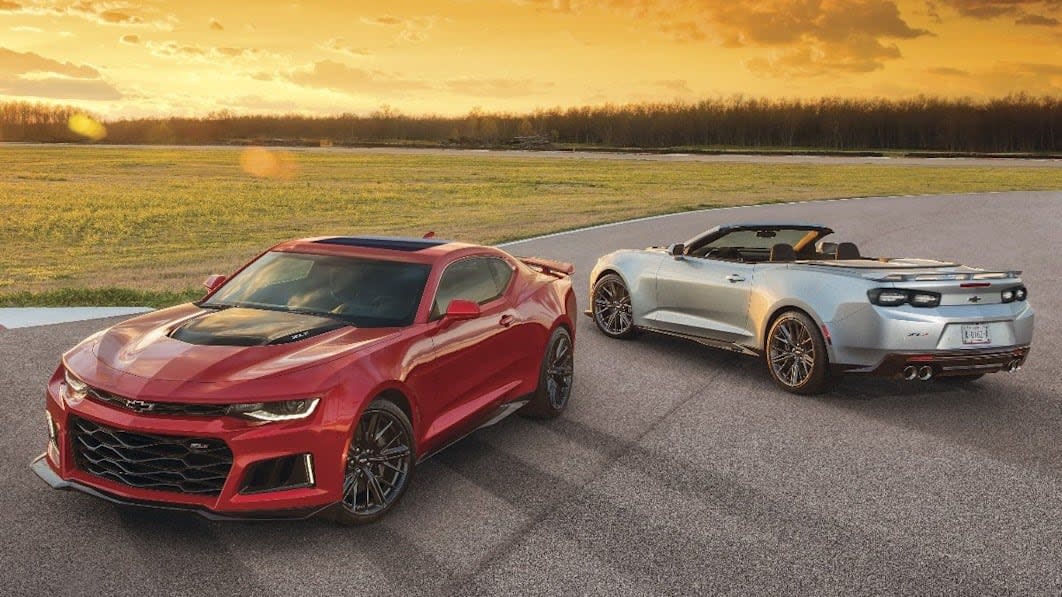Camaro 6: The best car we never loved?

It's difficult to concisely summarize the sixth-gen Camaro — well, I suppose "dead" is plenty concise. But eye-grabbing superlatives such as "best bad car" or "worst good car" don't really apply, nor is it strictly "forgotten" nor "underappreciated." It's underpinned by the best chassis of any pony car ever built, offering a near-perfect blend of outright performance and ride quality (and enough options for both to satisfy virtually any backside). Yet it failed to capture our hearts, not to mention the lion's share of sales.
Why? Is it because V8-powered American cars in general are no longer cool? That certainly hasn't gotten in the way of the Dodge Challenger — a car in constant danger of falling apart under the sheer mass of its own charisma. The big, brutish coupe is ending its absurdly long run at the top of the V8 American coupe sales chart — an admittedly dubious accomplishment in light of Covid's influence on sales figures, but its lasting appeal speaks for itself.
But Camaro can't blame the coronavirus for its inability to woo us; our minds were made up long before our lungs got gunky. Camaro came out of the gate with an almost imperceptible limp; it was missing the spark that elevates likable to lovable. Why? I can only speculate, but if I were a betting man, I'd put my money on the likelihood that GM committed a familiar unforced error: Putting too much faith in The Internet™.
You know, that place where we all go to rage anonymously about things the people in our real lives are sick of hearing about. The same internet where people say they'd gladly buy an over-tired Radio Flyer with a V8 strapped to it, if only the fun police would just get out of the way. Oh, but it needs to cost $2,500, be exclusive only to people who upvoted a particular thread on (enthusiast forum here), and come with a 12-year, 240,000-mile warranty with service performed only by serious looking people in white suits, not the dirty wage slave who replaced the brake pads on your sister's Equinox.
I exaggerate, but not by much. For decades, American performance cars have been held to an unreasonable double-standard. In the eyes of many, not only must they be objectively and subjectively better than anything offered by a foreign manufacturer, they must do so at a dramatically lower price point to be worth taking a chance on. Unless we're talking about Corvettes, of course, in which case they must be priced higher to be taken seriously. As opposed to the NSX, you know, (*waves hands*) for reasons.
Let's go back a few years. Outside of GM fandom, the fifth-gen Camaro was derided as simultaneously too large to be a good performance car and too cramped to be worth driving every day. To compare it with the imaginary rocket-wagon above is patently unfair, but having done more than my share of pontificating within the cozy digital confines of an enthusiast echo-chamber, I promise you that the sentiment isn't that far off. Even the beastly Z/28 wasn't enough to satisfy the snobs. "Build one that isn't big and bloated and kicks ass right out of the box, and I'll buy one," the internet bluffed.
And GM called. The sixth-gen Camaro launched in 2016 to near-universal praise from every outlet with even the slightest enthusiast lean. It did everything right: It got smaller, lighter and more powerful. It was better by every tangible and intangible performance metric. It was such a hit that Camaro sales (checks notes) continued a steady decline that began after peaking at 91,000 cars in 2012.
Wait, what? In case you haven't picked up on my subtle hints, I've been letting on that The Internet™ is full of ****.
I can condense any pony car shootout down to two simple finishing orders. If you care about how the car drives, it's Camaro first, Mustang second and Challenger last. If day-to-day livability is your priority, then reverse them. It's that simple. Looking at it that way, it's no surprise that Mustang was so dominant for so long. As its positioning suggests, it really was an excellent compromise, with a lean toward performance rather than practicality.
But a simple finishing order doesn't tell the whole story; there's more to it than what's first and what's worst. The Camaro is so great to drive that an enthusiast can probably look past its shortcomings, but did it need to have them in the first place? Did its compromises make it a better performer? That's hard to say. Its pinched trunk opening would certainly contribute to a stiffer chassis, which probably saved GM some weight, and to what extent did the gun slit windows and cramped footwell do the same? How much more Camaro could we have had without giving up what made it so insanely good? The way I see it, GM has answered that question already. Twice.
There's a flip side to this, of course. Do we know for certain that the Camaro would have sold better if GM's priorities had been rearranged — if the difference between Camaro and Mustang had come down to no more than preference? More important, would it have mattered given that Stellantis can probably shake loose Challengers out of its break room sofa? The answer of course is no.
What I do know is that GM's performance ICE engineers have nothing at all to be ashamed of. Whether it's Camaro, Corvette or Blackwing, there's no bad fuel-burning performance vehicle in the company's current portfolio. I'll miss the Camaro, but I wish I was going to miss it more.
Related video
You Might Also Like



